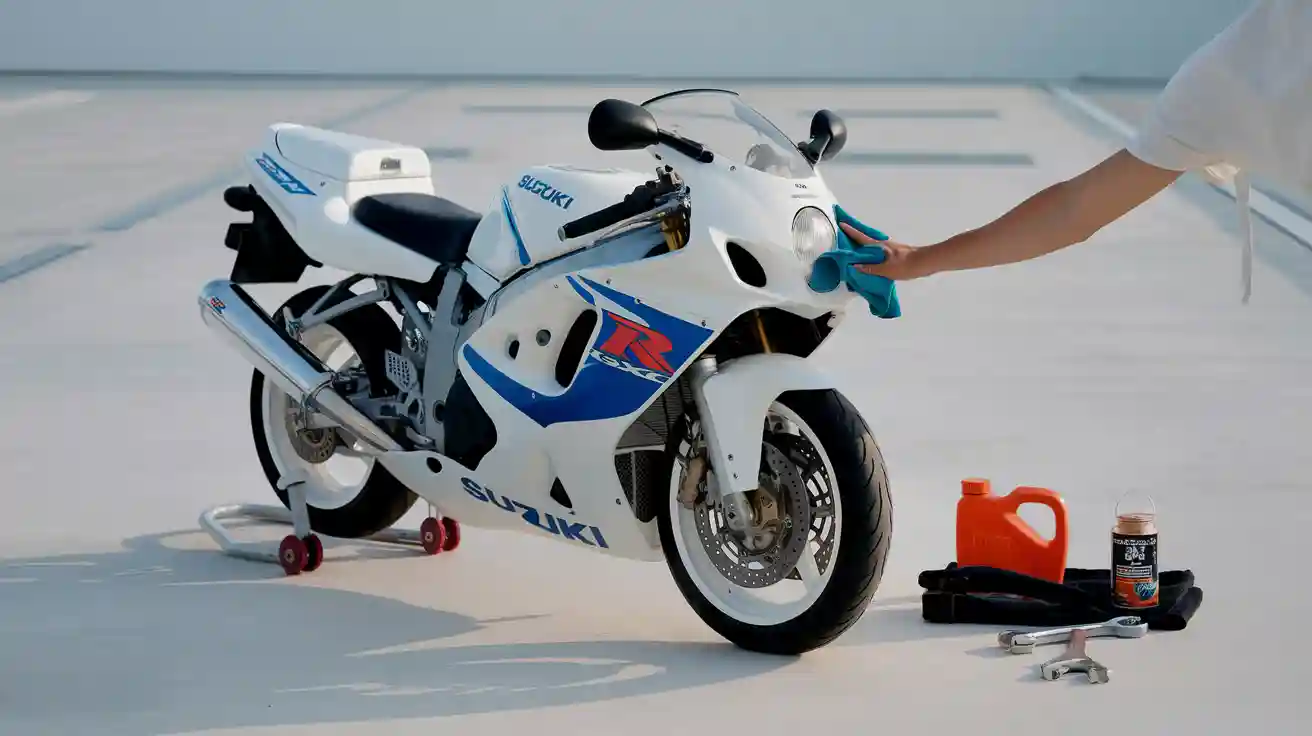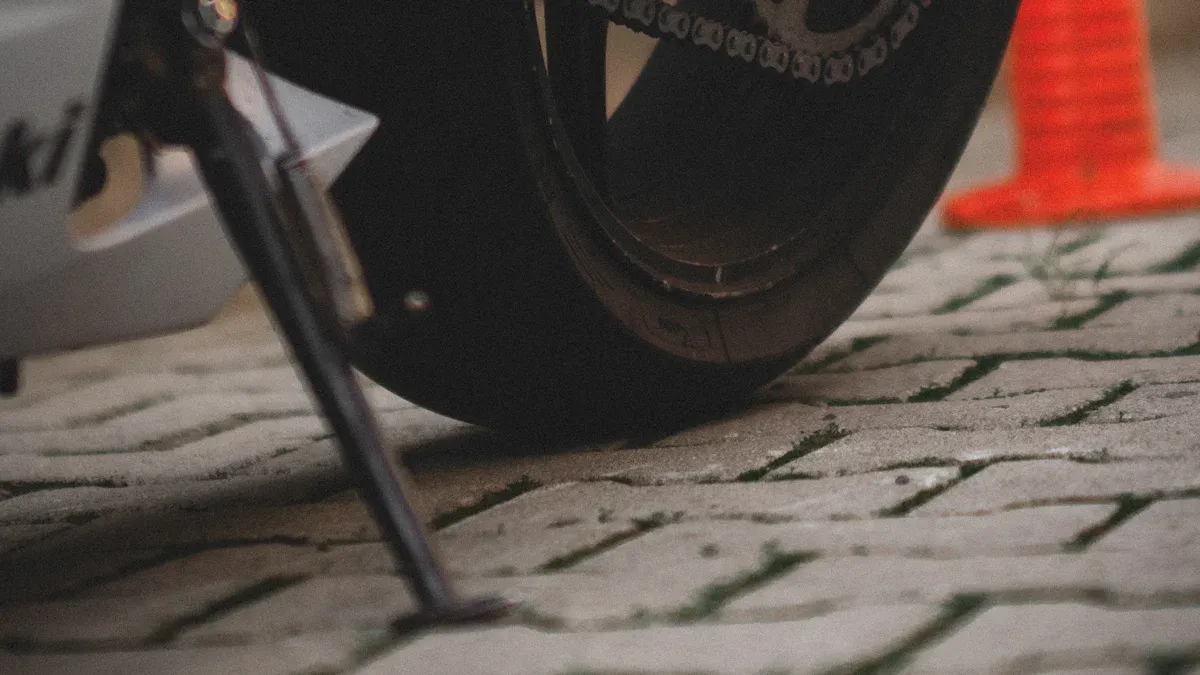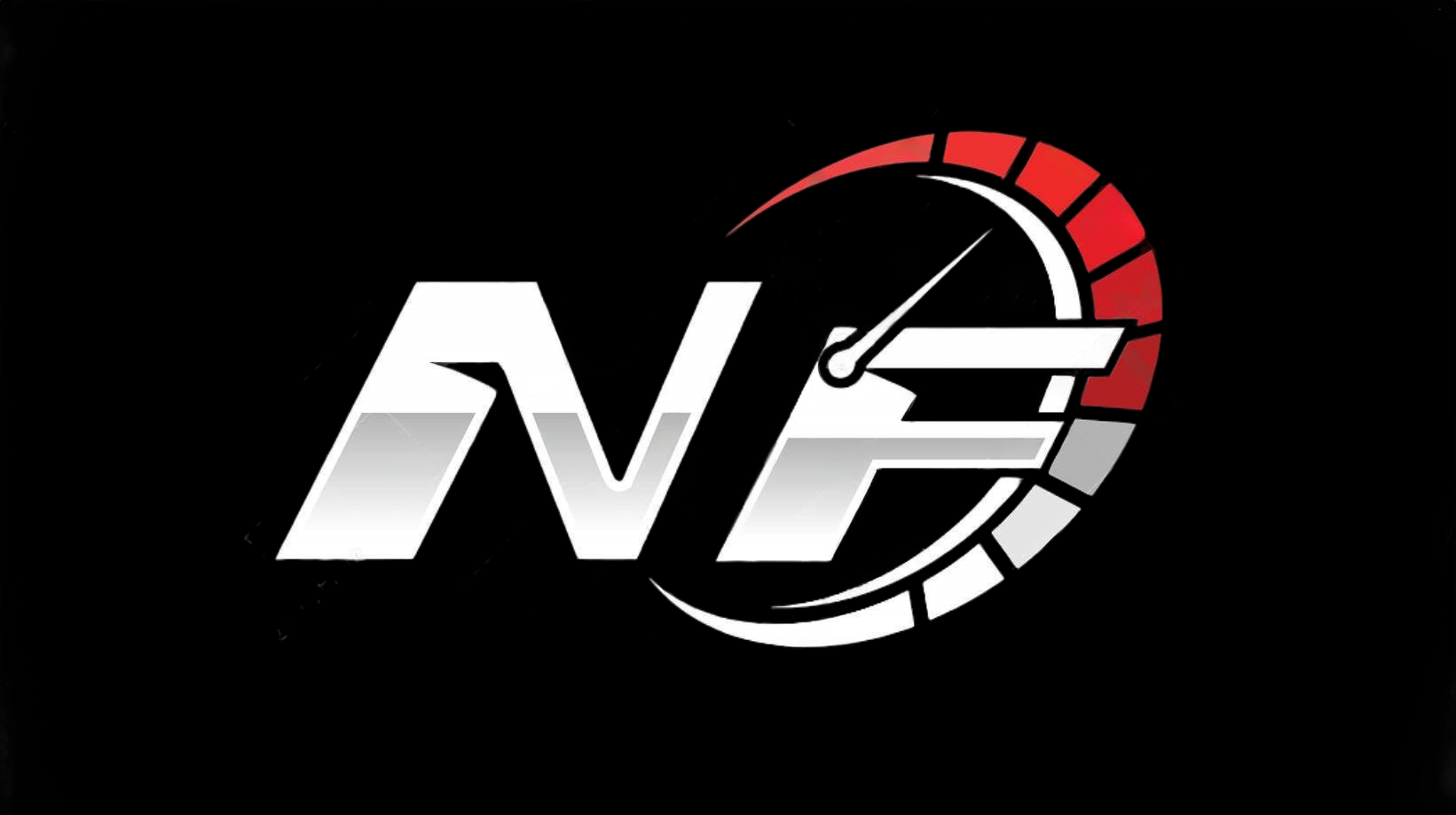Simple Steps to Maintain Your 2006 GSX-R600 for Peak Performance

You want your 2006 gsx r600 to stay reliable and fun. Regular maintenance helps your gsx-r600 avoid problems and run at its best. When you check your suzuki motorcycle often, you catch small issues before they become big repairs.
- Simple tasks like checking fluids, brakes, and chain tension keep your motorcycle safe.
- Changing oil and filters on your suzuki gsx-r600 prevents wear and keeps the engine strong.
- Replacing old parts and keeping up with suzuki service helps your motorcycle last longer.
Taking care of your suzuki motorcycle lets you enjoy every ride on your gsx-r600.
2006 GSX-R600 Oil and Filter Maintenance
Oil Change Intervals and Maintenance Schedule
You need to follow the right maintenance schedule to keep your gsx-r600 running strong. Suzuki recommends changing the oil on your 2006 gsx r600 every 3,500 miles. This interval comes from the official service manual and helps protect your engine from wear. Many riders stick to this schedule to keep their warranty valid and avoid engine problems. Some riders change oil sooner, especially if they ride hard or in tough conditions. You should always check your maintenance schedule and adjust your service intervals if you ride in dusty or hot areas. Regular oil changes are a key part of periodic maintenance and help your suzuki gsx-r600 last longer.
Tip: Mark your calendar or set a reminder for your next oil change. Sticking to the schedule keeps your gsx-r600 in top shape.
How to Change Oil and Filter on a Suzuki GSX-R600
Changing the oil and filter on your suzuki gsx-r600 is a simple job if you have the right tools and follow the maintenance schedule. Here is what you need:
| Tools/Materials | Details/Specifications |
|---|---|
| Wrench or Socket | 17mm wrench or 17mm socket and ratchet |
| Screwdriver | Flat head screwdriver |
| Allen Wrench or Socket | 4mm Allen wrench or socket |
| Drain Pan | To catch used oil |
| Oil Filter Wrench | 67mm oil filter wrench |
| Cleaning Materials | Rags, high-flash point solvent |
| Funnel | For pouring oil |
| Engine Oil | SAE 10W-40, 2.5 liters |
| Oil Filter | Model 16510-07J00 |
| Crush Washer | For drain bolt replacement |
First, warm up your engine for a few minutes. This helps the oil drain better. Place the drain pan under the engine, remove the drain bolt, and let the oil flow out. Replace the crush washer, then install the drain bolt. Use the oil filter wrench to remove the old filter. Install the new filter and tighten it by hand. Pour in fresh engine oil, check the level, and start the engine. Let it run for a minute, then check the oil level again and top off if needed. Always follow your maintenance schedule and service intervals for best results.
Choosing the Right Oil for Your GSX-R600
Picking the right oil keeps your suzuki gsx-r600 engine healthy. Most riders use 10W-40 or 15W-40 oil for this model. Oils with good shear stability work best because the gsx-r600 uses a shared sump design. Many riders like Shell Rotella 15W-40 for its strong performance. Avoid low viscosity 5W oils, as they break down faster. You can also use Amsoil 20W-50 or Mobil 1 4T if you want extra protection. Suzuki’s own 10W-40 oil is available, but some riders find it expensive. Always check your maintenance schedule and use oil that meets API SF and JASO MA standards. Changing your engine oil on time keeps your gsx-r600 running smooth and strong.
GSX-R600 Chain Maintenance and Care

Inspecting and Adjusting Chain Tension
You should check the chain tension on your gsx-r600 before every ride. Suzuki recommends this as part of your regular maintenance routine. Keeping the chain within the correct slack range—20 to 30 mm (0.8 to 1.2 inches)—helps your motorcycle run smoothly and safely. Many riders check the chain tension almost every ride, while others do it every 600 miles or after track sessions. If you notice the chain feels loose or tight, adjust it right away. To adjust, loosen the rear axle and adjuster nuts, set the tension, make sure the wheel stays aligned, then tighten everything to the correct torque. Always re-check the slack after tightening.
Tip: Regular chain checks are a key part of periodic maintenance and help prevent bigger problems down the road.
Cleaning and Lubricating the Chain
Proper cleaning and lubrication keep your gsx-r600 chain in top shape. You should clean and lubricate the chain about every 600 miles. Use a chain brush with hard bristles to remove old grease and dirt. This prepares the chain for fresh oil and helps extend its life. After cleaning, apply a good quality chain lubricant made for motorcycles. Clean and lubricate more often if you ride in wet or dirty conditions. This simple maintenance step protects your motorcycle’s drive system and supports periodic maintenance.
| Product Component | Description |
|---|---|
| Chain Brush 360 Cleaning Slug | 360-degree cleaning for all motorcycle chains; over 1000 bristles for deep cleaning |
| Cleaning Brush Chain Blue | Hard bristles; cleans motorcycle and bike chains; length 25cm; weight 75g |
Signs Your Chain Needs Attention
Watch for signs that your gsx-r600 chain needs maintenance. If you hear rattling or tapping noises, especially when the engine is cold, the chain may be too loose. Loud whining or screaming sounds at idle can also mean trouble. Sometimes, a worn chain tensioner or guides cause these noises. If the chain feels tight or the engine starts slowly, the chain might be too tight. Always listen for unusual sounds and check the chain if you notice anything different. Early attention keeps your motorcycle safe and helps you avoid costly repairs.
Note: Good chain maintenance keeps your gsx-r600 running strong and smooth.
Suzuki GSX-R600 Tire Maintenance

Checking Tire Pressure and Tread
You should check your tire pressure before every ride. The suzuki gsx-r600 manual recommends about 36 psi for both the front and rear tires under normal riding conditions. You can find this information on the label near the chain guard or rear swing arm. Always check tire pressure when the tires are cold. During a ride, the pressure can rise by about 3 psi as the tires warm up. Some riders prefer slightly lower pressures, like 32-34 psi, for better comfort and grip on the street. Never use the maximum pressure listed on the tire sidewall for daily riding.
For a proper tire inspection, look for cracks, cuts, or uneven wear on the tread and sidewalls. Use a tread depth gauge or a coin to check if the tread is deep enough. If you see any damage or the tread looks low, plan for replacement soon.
When to Replace Tires on a GSX-R600
You need to replace your suzuki gsx-r600 tires when you see signs of aging or wear. If you notice cracks, deformations, or bald spots during maintenance, it is time for new tires. Suzuki recommends having a professional check your tires every year after five years of use. Even if your tires look fine, replace them after ten years as a safety measure. Riding with old or worn tires can make your motorcycle unsafe and affect performance.
Tips for Tire Longevity
You can make your gsx-r600 tires last longer with a few simple steps.
- Keep your tire pressure at the recommended level.
- Inspect your tires often for damage or wear.
- Store your suzuki motorcycle in a cool, dry place away from sunlight.
- Avoid carrying heavy loads or riding at high speeds for long periods.
- Ride smoothly and avoid hard braking or sharp turns.
Tip: Regular maintenance and careful riding help your suzuki gsx-r600 tires last longer and keep your motorcycle safe.
GSX-R600 Brake System Maintenance
Inspecting Brake Pads and Rotors
You need to check your Suzuki GSX-R600 brake pads and rotors often as part of your regular maintenance. Look at the brake pads through the caliper window. Most pads have a groove in the middle. Replace the pads when this groove disappears. If your pads do not have a groove, measure the friction material. Change the pads when the thickness gets close to 2mm or less. Never let the friction material get thinner than the metal backing plate. New pads usually have about 3.5mm of friction material. Always inspect the rotors for deep grooves, cracks, or warping. If you see any damage, replace the rotor right away.
Tip: Regular brake pad checks help you avoid sudden brake failure and keep your Suzuki safe.
Checking and Replacing Brake Fluid (DOT 4)
You should check your GSX-R600 brake fluid level and color every month. Suzuki recommends using DOT 4 brake fluid for best performance. Brake fluid absorbs water over time, which can lower its boiling point and make braking unsafe. Many riders change the brake fluid at least once every season. If you ride hard or use your brakes a lot, change it more often. Signs of bad brake fluid include a spongy feel at the lever or poor braking power. Always follow your service intervals and replace the fluid if it looks dark or cloudy.
- Replace brake fluid at least every season.
- Change fluid after heavy use or track days.
- Watch for a spongy brake lever or dark fluid.
Cleaning Calipers and Pistons
You should clean your Suzuki GSX-R600 brake calipers and pistons during every major service. Dirt and brake dust can build up and cause the pistons to stick. Use a soft brush and brake cleaner to remove grime from the caliper body and pistons. Move the pistons out slightly, clean them, then push them back in. This step keeps your brakes working smoothly and helps you follow your service intervals. Clean calipers also help your brake pads wear evenly and last longer.
Note: Good brake maintenance keeps your GSX-R600 stopping safely and extends the life of your Suzuki’s braking system.
2006 GSX-R600 Battery Care
Checking Battery Health and Voltage
You need to check your battery’s health as part of regular maintenance on your suzuki gsx-r600. Most motorcycle batteries last about 2 to 3 years under normal use. Some riders report their original batteries lasting even longer, especially if they ride often and take care of the battery. If you ride your suzuki regularly, the battery stays charged and lasts longer. Leaving your gsx-r600 unused for long periods can shorten battery life.
- Motorcycle batteries usually last 2 to 3 years.
- Riding often and using a trickle charger can extend battery life.
- Removing the battery during winter helps prevent damage.
To check if your battery is healthy, use a voltmeter. A healthy battery for your gsx-r600 should show a voltage close to 12.8 volts when resting. If the voltage drops below 8.0 volts, the battery needs charging or replacement. When charging, make sure the voltage does not go above 14.6 volts.
| Voltage Parameter | Value (Volts) |
|---|---|
| Nominal Voltage | 12.8 V |
| Charging Cut-Off Voltage | 14.6 V |
| Discharge Cut-Off Voltage | 8.0 V |
Tip: Check your battery voltage every month to avoid starting problems with your suzuki.
Cleaning Battery Terminals
Keeping your battery terminals clean is an important part of gsx-r600 maintenance. Corrosion can cause starting issues and electrical problems. You can clean the terminals with simple tools and supplies.
- Turn off your suzuki and remove the negative cable first, then the positive.
- Mix baking soda with water to make a cleaning solution.
- Use an old toothbrush to scrub the terminals and remove any corrosion.
- Rinse with water and dry with a clean rag.
- Apply a small amount of petroleum jelly to the terminals to prevent future corrosion.
- Reattach the positive cable first, then the negative.
Note: Regular cleaning keeps your gsx-r600 battery working well and helps prevent electrical issues.
Charging and Storing Your Battery
Proper charging and storage help your suzuki battery last longer, especially during the off-season. Before storing your gsx-r600, fully charge the battery. Disconnect it from the motorcycle to stop slow discharge. Use a trickle charger or maintenance charger to keep the battery at the right level. Store the battery in a cool, dry place, away from extreme temperatures. Clean the battery casing and terminals before storage to prevent corrosion. Check the battery charge every few weeks and recharge if needed.
- Charge the battery fully before storage.
- Disconnect the battery from your suzuki to prevent slow discharge.
- Use a trickle charger for long-term storage.
- Store in a cool, dry place and check charge regularly.
Keeping up with battery maintenance ensures your gsx-r600 starts easily and runs smoothly when you are ready to ride again.
Suzuki GSX-R600 Fluid Level Checks
Coolant System Inspection and Maintenance
You need to check the coolant level in your suzuki gsx-r600 often. The coolant keeps your engine from overheating. Look at the coolant reservoir on the right side of your gsx-r600. The level should stay between the "Full" and "Low" marks. If the coolant drops below the "Low" mark, add more coolant that matches suzuki’s recommendations. Never open the radiator cap when the engine is hot. Hot coolant can spray out and cause burns.
You should change the coolant every two years as part of your regular service. Old coolant can lose its ability to protect your engine. Use a funnel to pour in new coolant and tighten the cap securely. Always check for leaks around the hoses and radiator. If you see any leaks, schedule a service right away.
Tip: A clean and full coolant system helps your suzuki gsx-r600 run at the right temperature.
Clutch and Brake Fluid Checks
You must inspect the clutch and brake fluid levels on your gsx-r600. These fluids help you control your motorcycle safely. Look at the fluid reservoirs on the handlebars. The fluid should stay clear and reach the "Full" line. If the fluid looks dark or dirty, replace it during your next service.
Use only DOT 4 brake fluid for your suzuki gsx-r600. Check the owner’s manual for the correct type. Low fluid levels can mean a leak or worn brake pads. If you find low levels, top up the fluid and check for leaks. Always clean the reservoir caps before opening them to keep dirt out.
Regular Fluid Inspection Tips
You should make fluid checks a habit in your maintenance routine. Set a reminder to inspect all fluids every month. This includes coolant, brake fluid, and clutch fluid.
Here is a simple checklist for your suzuki gsx-r600:
- Check coolant level and color.
- Inspect brake and clutch fluid levels.
- Look for leaks under your motorcycle.
- Replace fluids as needed during service.
A regular inspection helps you catch problems early. You keep your gsx-r600 safe and ready for every ride.
GSX-R600 Air Filter and Spark Plug Maintenance
Inspecting and Replacing the Air Filter
You need to keep the air filter in your gsx-r600 clean to protect your engine. The maintenance schedule for your suzuki does not give a specific time for inspection, but it does recommend replacing the air filter at 11,000 miles. Many riders check the air filter more often than the schedule suggests. Dust and dirt can build up quickly, especially if you ride in tough conditions. You can inspect the air filter during regular maintenance. If you see a lot of dirt, you should clean it. Use compressed air to blow out dust, but avoid washing the stock filter with water or soap. Some riders use reusable filters like K&N, which you can clean and reuse. Always follow the maintenance schedule and replace the filter if it looks damaged or very dirty.
Tip: A clean air filter helps your engine breathe better and keeps your gsx-r600 running strong.
Spark Plug Inspection and Replacement Schedule
Spark plugs play a big role in your gsx-r600’s engine performance. You should follow the maintenance schedule for checking and replacing spark plugs. Suzuki recommends inspecting the spark plugs at regular intervals and replacing them as needed. Worn or dirty spark plugs can cause poor starting, rough idling, or weak acceleration. During each inspection, look for signs of wear, such as a worn electrode or heavy deposits. Replace the spark plugs if you notice any problems. Always use the correct type of spark plug listed in your maintenance schedule.
How Often to Check Air Filter and Spark Plugs
You should make air filter and spark plug checks part of your regular maintenance routine. The schedule suggests replacing the air filter at 11,000 miles, but you may need to inspect and clean it more often. For spark plugs, check them at every major service or as listed in your maintenance schedule. If you ride in dusty areas or push your gsx-r600 hard, inspect these parts more often. Keeping up with the maintenance schedule helps your engine last longer and keeps your suzuki running at its best.
- Inspect the air filter during every oil change.
- Check spark plugs at each major service.
- Replace parts sooner if you notice performance issues.
Regular checks and following the maintenance schedule keep your gsx-r600 reliable and your engine healthy.
2006 GSX-R600 Cable and Suspension Maintenance
Inspecting and Lubricating Throttle and Clutch Cables
You should check your throttle and clutch cables as part of regular maintenance. These cables help you control your motorcycle and keep the engine running smoothly. Look for any signs of fraying, rust, or kinks along the cable. If you see damage, replace the cable right away. To keep the cables working well, use a cable lubricant. Apply a small amount at the top of the cable and let it run down inside. Move the lever back and forth to spread the lubricant. This step helps prevent sticking and makes your controls feel smooth. Clean cables also reduce wear on your suzuki and help you avoid problems during a ride.
Tip: Lubricate your cables every few months or after riding in rain to keep your motorcycle controls light and easy.
Suspension Inspection for Wear
Your gsx-r600’s suspension keeps your ride safe and comfortable. You need to inspect the suspension during every major service. Look for oil leaks around the fork seals and check for dents or scratches on the fork tubes. Push down on the handlebars and watch how the suspension moves. If you notice the front end feels too soft, bounces too much, or makes clunking sounds, the suspension may need attention.
Here is a table showing common signs of suspension wear and what they mean:
| Suspension Issue | Common Signs / Symptoms | Explanation / Interpretation |
|---|---|---|
| Lack of Rebound | Plush forks, loss of control at speed, front-end chatter, wallowing exiting turns | Worn or maladjusted rebound damping |
| Too Much Rebound | Locked-up front end, harsh ride, skipping bumps, front-end shaking or tank slapping | Excessive rebound damping causing stiffness |
| Lack of Compression | Severe front-end dive, bottoming out, soft or vague front feel, clunk on bottoming | Insufficient compression damping or wear |
| Too Much Compression | Front rides high in corners, front wheel bounces, harsh ride especially when braking | Excessive compression damping or maladjustment |
| Front-end Chatter | Chatter or shaking entering turns | Suspension wear or improper setup affecting stability |
If you see any of these signs, schedule a service with your suzuki dealer. Good suspension maintenance keeps your motorcycle stable and protects the engine from extra stress.
Adjusting Suspension Settings
You can adjust your suspension settings to match your riding style and weight. Use the adjusters on the top and bottom of the forks and the rear shock. Turn the adjusters in small steps and test the ride after each change. If your motorcycle feels too soft or bottoms out, add more compression damping. If it feels harsh or skips over bumps, reduce the damping. Always write down your settings so you can return to them later. Proper suspension adjustment improves handling, keeps your engine safe, and makes every ride more enjoyable.
Note: Check your owner’s manual for recommended settings and always make changes during regular maintenance or service.
General Suzuki GSX-R600 Maintenance and Cleaning
Visual Walk-Around and Safety Checks
You should start every ride with a quick visual check of your suzuki gsx-r600. Walk around your motorcycle and look for anything unusual. Check the tires for cuts or low pressure. Look at the brake lines and cables for cracks or leaks. Make sure the lights and signals work. Test the horn and mirrors. If you spot loose bolts or missing fasteners, tighten or replace them before you ride. This simple routine helps you catch problems early and keeps your gsx-r600 safe.
Tip: A two-minute walk-around can prevent a breakdown or accident.
Keeping Your GSX-R600 Clean
Cleaning your suzuki gsx-r600 does more than make it look good. Dirt and grime can hide leaks or damage. Use a soft sponge and mild soap to wash the bodywork. Rinse with clean water and dry with a microfiber towel. Avoid spraying water directly into the exhaust or electrical parts. Clean the chain and wheels with a brush. Wax the painted surfaces to protect them from sun and rain. Regular cleaning is an easy way to spot issues and helps your maintenance routine.
| Cleaning Task | How Often | Tools Needed |
|---|---|---|
| Wash bodywork | Weekly | Sponge, soap, towel |
| Clean chain/wheels | Every 2 weeks | Brush, cleaner |
| Wax paint | Monthly | Wax, cloth |
Spotting Early Signs of Trouble
You can avoid big repairs by noticing small changes in your suzuki gsx-r600. Listen for new noises when you start the engine. Watch for warning lights on the dash. Feel for changes in how the motorcycle handles or brakes. If you smell fuel or see smoke, stop and check right away. Early signs often mean you need maintenance soon. Write down anything unusual in a notebook. Share this information with your mechanic if you need help.
Note: Paying attention to early signs keeps your suzuki gsx-r600 reliable and safe for every ride.
You keep your 2006 gsx r600 running strong when you follow your maintenance schedule. The suzuki gsx-r600 needs regular checks, so you should always look at your maintenance schedule before each ride. Your maintenance schedule tells you when to inspect your suzuki gsx-r600 and what to do at each step. Mark your maintenance schedule on your calendar. You protect your 2006 gsx r600 by sticking to the schedule. The suzuki gsx-r600 rewards you with smooth rides when you follow your maintenance schedule. Take pride in your suzuki gsx-r600 and enjoy every mile.
Remember: Your maintenance schedule is the best tool for keeping your suzuki gsx-r600 safe and reliable.
FAQ
How often should you check your GSX-R600 chain?
You should check your chain before every ride. Look for proper tension and signs of wear. A quick check helps you spot problems early and keeps your ride safe.
What type of oil works best for a 2006 GSX-R600?
Use 10W-40 motorcycle oil that meets API SF and JASO MA standards. Synthetic or semi-synthetic oils both work well. Always check your owner’s manual for Suzuki’s recommendations.
When should you replace your GSX-R600 brake pads?
Replace your brake pads when the friction material gets close to 2mm thick. If you hear squeaking or feel weak braking, check the pads right away.
How do you know if your battery needs replacing?
Check your battery voltage with a voltmeter. If it drops below 8.0 volts or your bike struggles to start, you likely need a new battery.
What is the best way to clean your GSX-R600 air filter?
Remove the air filter and use compressed air to blow out dust. Do not wash the stock filter with water. Replace it if you see damage or heavy dirt.
See Also
How To Properly Care For Your First Motorcycle
Key Advice To Help You Build Your Dream Bike
Effective Ways To Clean And Maintain Motorcycle Fairings

